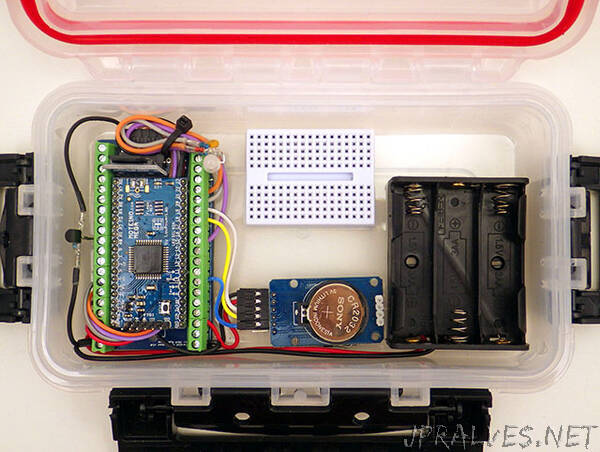
“In the 2018 paper we tried to convey that it doesn’t matter which processor you use with our system as long as it’s supported by the Arduino IDE. The ATmega family includes several CPUs more capable than the humble 328p in the Pro Mini / UNO. In fact, some have suggested that the 1284 would have been a better choice right from the start, with full code compatibility once you account for the different port / pin mapping. We built several loggers around that chip early in the project, but at the time I was mostly just leaning on the extra memory to compensate for some fairly crude programming. As my skills improved, and I stopped using bloated sensor libraries, that problem went away. So it’s been a while since I needed anything more than the 328p. But we have a new project spinning up this year that calls for burst sampling of high-bit ADC channels, and we’ll need more SRAM to juggle that data with some fairly large buffer-arrays.
For those who build from scratch, Dave Cheney shows one approach to starting with the raw chip. At the opposite end of the spectrum, Stroud Research Center’s Mayfly is a good combination if you’d prefer something ready-made. But I still have a a few Moteino MEGAs lying around, and this project has always followed the ‘middle path’ to enlightenment. So we’ll use one of those boards to demonstrate how easy it is to give our classroom logger a processor upgrade:
At the time of this writing there are a few 1284 few boards on the market: the Moteino MEGA , the Megabrick, the Dwee, and the ultra compact Pro Mini XL. Other projects sporting the chip seem to pop up regularly, though few seem to last very long. This is a shame because 1284 has enough juice to do single-chip emulation of early 8-bit computers. But perhaps the chip never really caught on in Arduino-land because few beginners need that much capability. Sustained interest from dedicated makers means that some version, or at least DIY instructions, will will be available as long as the chip is in production. If I had to, the terminal expansion board I’ve used here would let me build one of those from the raw chip & a few passives. The trick would be making templates for the boards.txt and pins_arduino.h, and finding a bootloader that matches the system clock.”
